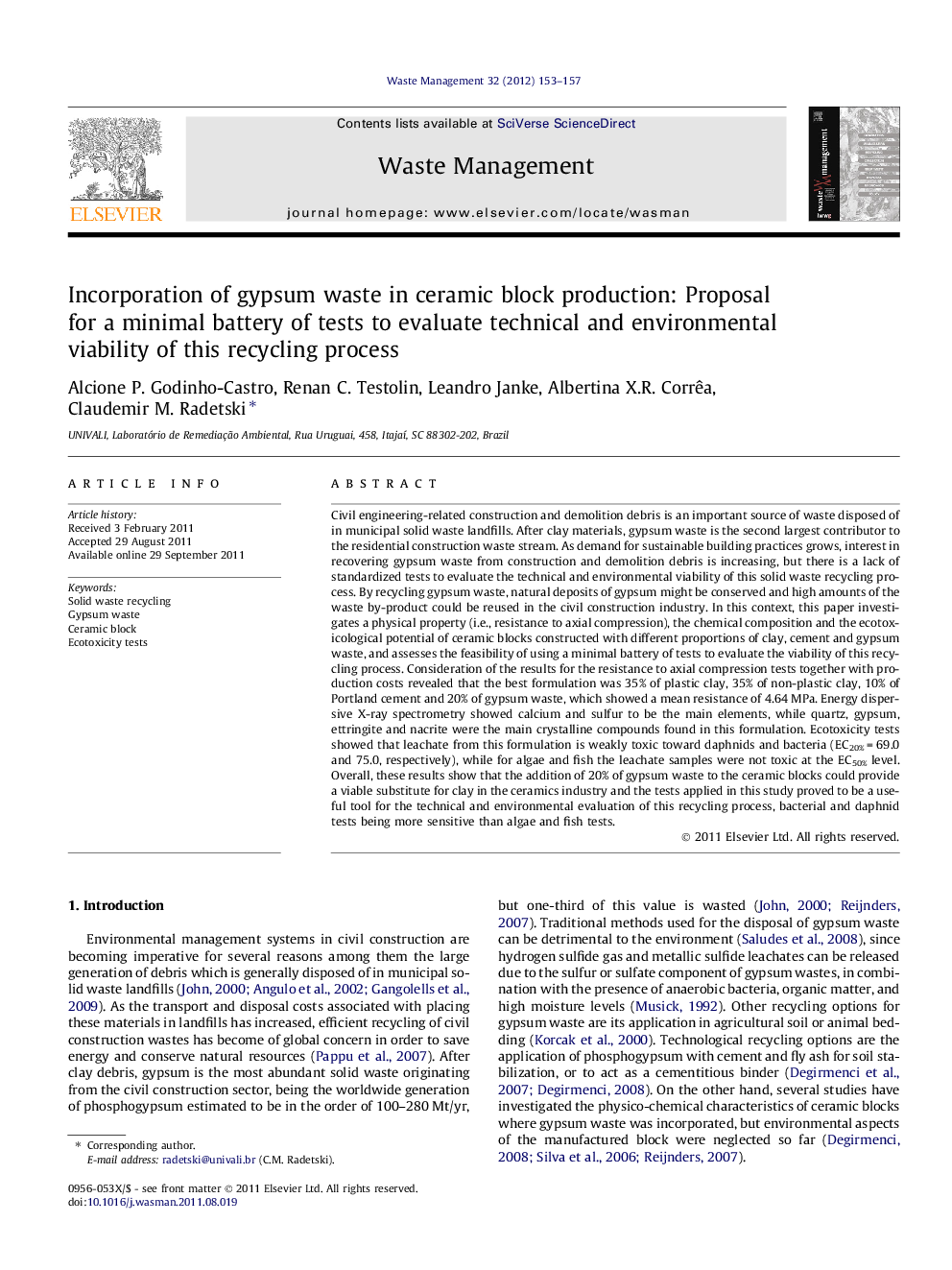| کد مقاله | کد نشریه | سال انتشار | مقاله انگلیسی | نسخه تمام متن |
|---|---|---|---|---|
| 4472349 | 1315065 | 2012 | 5 صفحه PDF | دانلود رایگان |

Civil engineering-related construction and demolition debris is an important source of waste disposed of in municipal solid waste landfills. After clay materials, gypsum waste is the second largest contributor to the residential construction waste stream. As demand for sustainable building practices grows, interest in recovering gypsum waste from construction and demolition debris is increasing, but there is a lack of standardized tests to evaluate the technical and environmental viability of this solid waste recycling process. By recycling gypsum waste, natural deposits of gypsum might be conserved and high amounts of the waste by-product could be reused in the civil construction industry. In this context, this paper investigates a physical property (i.e., resistance to axial compression), the chemical composition and the ecotoxicological potential of ceramic blocks constructed with different proportions of clay, cement and gypsum waste, and assesses the feasibility of using a minimal battery of tests to evaluate the viability of this recycling process. Consideration of the results for the resistance to axial compression tests together with production costs revealed that the best formulation was 35% of plastic clay, 35% of non-plastic clay, 10% of Portland cement and 20% of gypsum waste, which showed a mean resistance of 4.64 MPa. Energy dispersive X-ray spectrometry showed calcium and sulfur to be the main elements, while quartz, gypsum, ettringite and nacrite were the main crystalline compounds found in this formulation. Ecotoxicity tests showed that leachate from this formulation is weakly toxic toward daphnids and bacteria (EC20% = 69.0 and 75.0, respectively), while for algae and fish the leachate samples were not toxic at the EC50% level. Overall, these results show that the addition of 20% of gypsum waste to the ceramic blocks could provide a viable substitute for clay in the ceramics industry and the tests applied in this study proved to be a useful tool for the technical and environmental evaluation of this recycling process, bacterial and daphnid tests being more sensitive than algae and fish tests.
► Proposition of tests to assess technical-environmental viability of gypsum waste reuse.
► Use of a battery of standardized biotests in the evaluation of ceramic block leachate.
► Determination of the optimal gypsum waste quantity to be added to the ceramic block.
Journal: Waste Management - Volume 32, Issue 1, January 2012, Pages 153–157